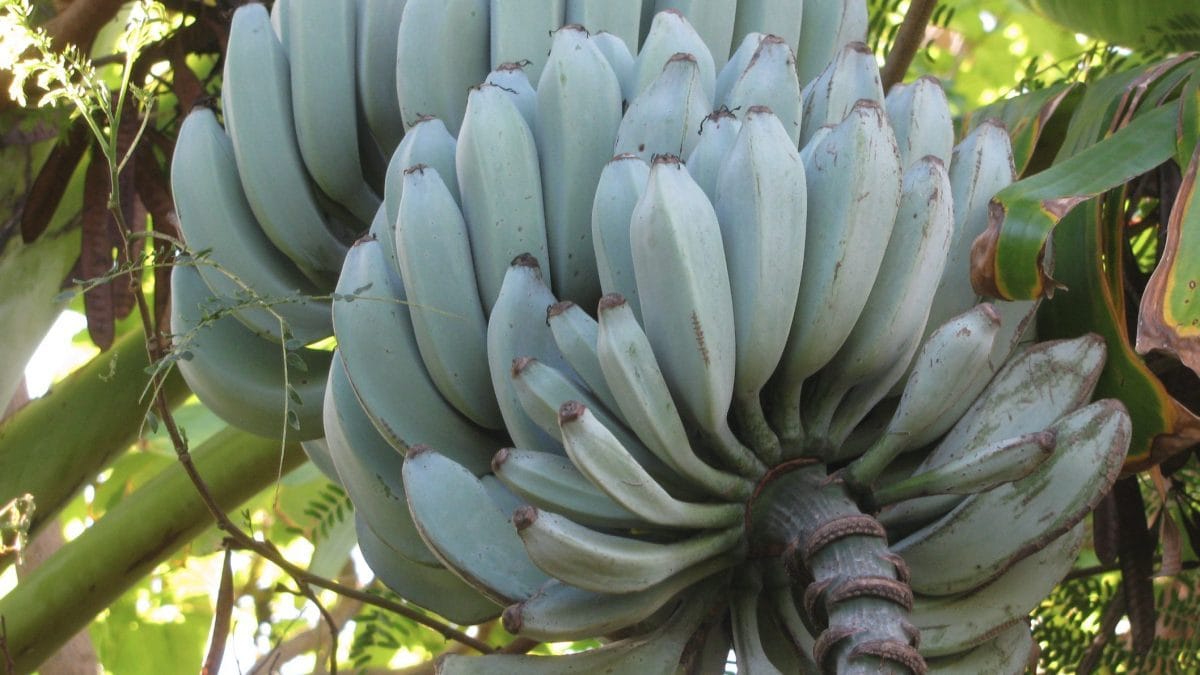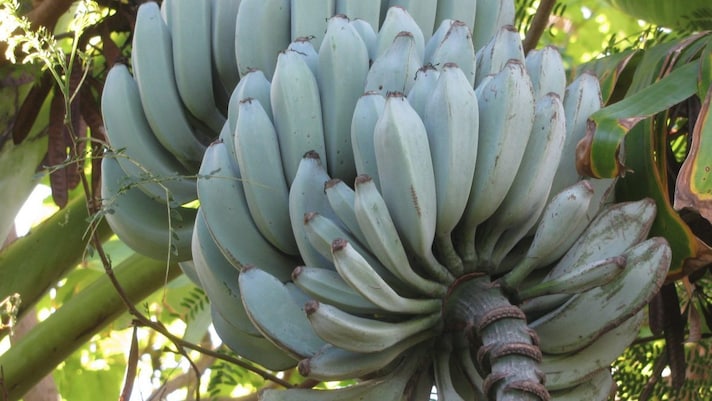
When we see bananas at the supermarket or greengrocer's, they all look the same. This is due to human selection, which has created duplicate fruits (actually clones) that are easy to grow and sell. Even though it's also hybridized, the Blue Java Banana certainly gets some recognition because it certainly doesn't go unnoticed. The reason? Not only does the peel have an eye-catching pale blue color, but the flavor of the flesh is said to be irresistible: sweet and with hints of vanilla, not to mention the creamy consistency. In short, for some, it's the best banana in the world. Let's get to know it.
What is Banana Blue Java?
The Blue Java is a hybrid obtained from the cross between Musa acuminata and Musa balbisiana, two species of banana from which hundreds of other varieties derive, including the Cavendish, the most widespread in the world, which represents the international reference standard: the fruit is elongated, the pulp compact, sweet and tender when it is about to ripen and, above all, it is seedless, which wild bananas still possess. The Blue Java shares this genetically modified origin, with the fruit being slightly larger: the plant is robust, grows vigorously and resists the most difficult environmental conditions, even tolerating the cold. From a nutritional point of view, it is not far from the classic banana: a good source of vitamin B6, potassium, manganese, fiber and a medium-low glycemic index, so much so that it is one of the healthiest hunger-busting snacks par excellence. Why is it special? For two aspects that characterize the different names by which it is known: the peel, which has blue-greenish shades when unripe and the pulp, with a soft consistency and a sugary, vanilla-like flavor, which makes it comparable to ice cream.

Characteristics and Flavor
Let's be clear: in the U.S. this banana is almost impossible to find, typical of some tropical areas of Central America, the Philippines, the Fiji Islands, Hawaii and even Australia. It is not only known by the name Blue Java Banana, despite it being the most popular. It is also called Hawaiian banana, Ney Nannar, Krie, Cenizo or Ice Cream Banana, probably the name that most effectively underlines its deliciousness. If the most noticeable peculiarity is the color of the peel, which turns yellow as it ripens, it is the taste that is a real surprise: the inside is white, creamy, with a sweet flavor, reminiscent of vanilla and even custard, so much so that it seems like a dessert.
How to Use It in The Kitchen
With such organoleptic characteristics, one could say that this banana is perfect for enhancing all the most traditional ways of enjoying it. Peeled and eaten fresh whole, or used to enrich a fruit salad or as a garnish for yogurt, porridge, and breakfast pudding. The velvety pulp, with its vanilla flavor, is a real treat when used in soft-textured preparations, such as puddings and creams, but also in milkshakes and smoothies. Cut into chunks, frozen, and blended with a little vegetable cream, berries, or chocolate cream, it becomes a very easy and quick ice cream to make. Furthermore, mashed or pureed banana pulp is excellent for flavoring and adding moisture to banana bread, muffin, and pancake batters.
;Resize,width=767;)
